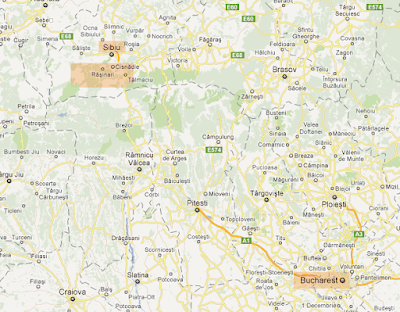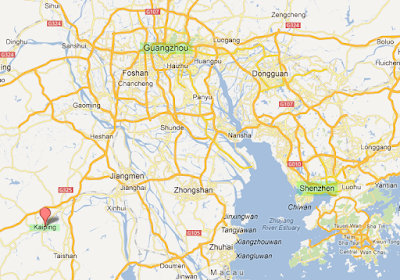There must be a fascinating history behind this amazing painted church and its graveyard that I am posting for Monday Mural and Taphophile Tragics. It pains me that I cannot find anything about it (online)!
On the start of a long weekend last June my brother and I drove north from Bucharest a bit over three hours, then got off the main road at Boita to explore a string of 18 traditional Romanian settlements in a special area called Mărginimea Sibiului in southern Transylvania. Earlier I posted village scenes from this well-preserved ethnographic area along the foothills of the Cindrel Mountains.
We spotted this little Romanian Orthodox church not far from Boita, driving east toward Tălmacel (map below). Unfortunately, this is all I can tell you about this particular painted church and its graveyard. My photos will have to tell the story.
However, there are a great number of such architectural treasures - painted churches and monasteries - in Romania and Moldova built in the 16th and 17th centuries; many are listed in UNESCO's list of World Heritage sites.
It's quite possible, since we did not see headstones predating the 20th century, that this is a more recent church and graveyard. But it is still a marvel to behold.
Post script: Thanks to fellow blogger Traveling Hawk from Romania, I can now tell you a little more. This church was erected between the years 1775-1784 in Tălmacel, first recorded in 1488 as a small hamlet of ten families. Along with 246 others in Romania, the church was dedicated to the popular Saint Paraschiva. It was built and financed by the community, who made the bricks and transported them to the site on horses. Legend has it the money ran out before winter 1779, but the next spring a woman found a tub of gold coins. With this the interior was completed and painted by local masters. Restoration work was done 1975-80. [Sources: here and here.]
The main interior of the church was locked, but in the small entranceway we were greeted with a ceiling to floor fresco depiction of hell or purgatory.
Location: You can see all the towns on this map, with the highlighted orange area showing where this church should be.
The orange rectangle on this second map shows the approximate area of Marginimea Sibiului (meaning margins of Sibiu) in relation to Sibiu and Bucharest.
For more marvelous murals and fascinating burial grounds, follow the links in my opening paragraph. (Monday Murals now has a home; YaY!) I will visit as many as I can before I must close down for my trip to China. From there, accessing blogs is very difficult, thanks to an overzealous Big Brother.




















































